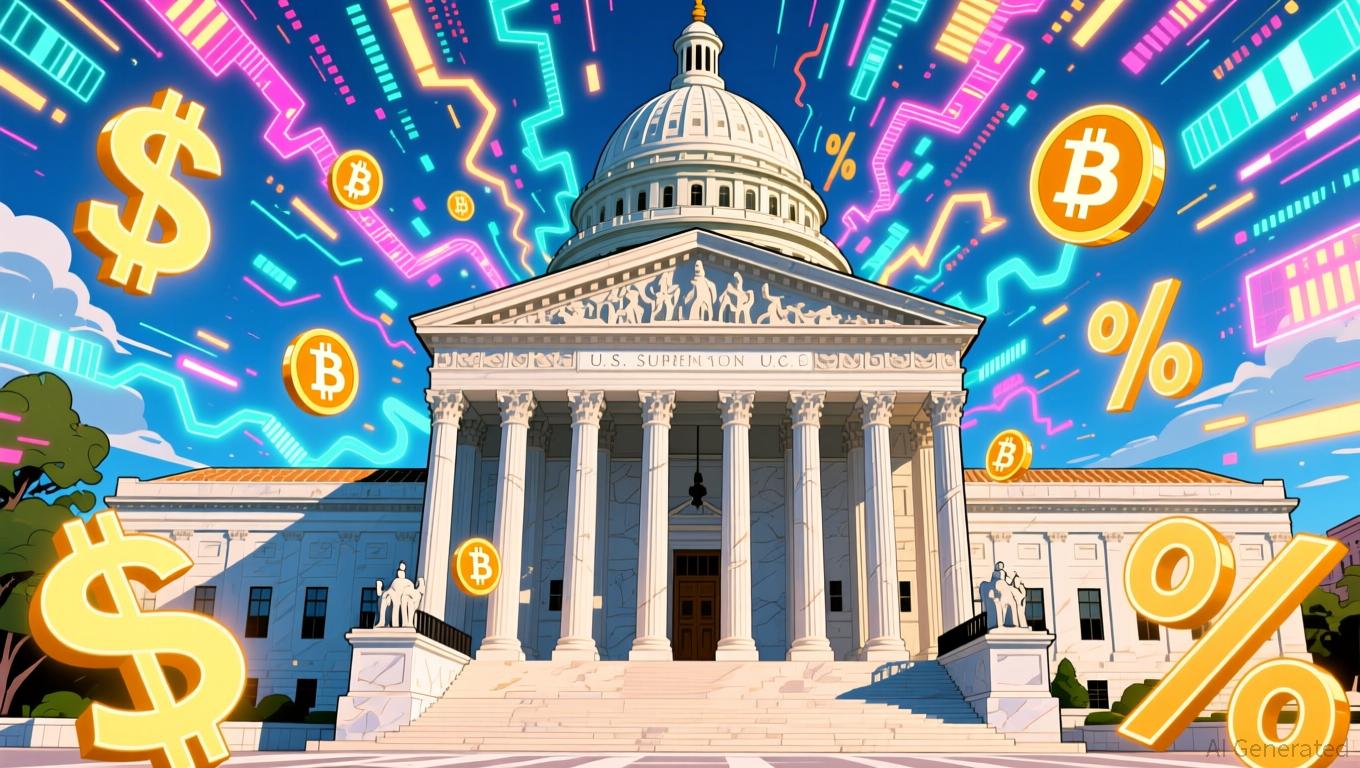Court Decision on IEEPA May Transform Tariff Policies and Cryptocurrency Rules
- U.S. Supreme Court's IEEPA ruling could invalidate Trump-era tariffs, forcing White House to adopt narrower legal tools like Sections 232/301 with slower processes and oversight. - Crypto markets face regulatory shifts as White House reviews CARF framework, which would grant IRS access to foreign crypto data but risks stifling decentralized innovation. - Over 65 crypto groups demand exemptions for decentralized developers amid concerns about prosecution risks and unclear DeFi tax rules under proposed reg
Crypto Markets Prepare for Volatility as White House Considers Tariff Alternatives During Supreme Court Deliberation
The impending Supreme Court ruling on whether the Trump administration’s use of the International Emergency Economic Powers Act (IEEPA) to impose tariffs was lawful has unsettled financial markets, with
IEEPA, a law from the 1970s that empowers presidents to declare national emergencies, has served as the

Meanwhile, the crypto industry is on alert for regulatory changes as the White House evaluates Treasury’s proposal to join the global Crypto-Asset Reporting Framework (CARF).
The intersection of trade and crypto regulation highlights broader risks for the regulatory environment. A Supreme Court decision against IEEPA could delay tariff repayments, extending economic instability and possibly affecting the Federal Reserve’s schedule for lowering interest rates. At the same time, crypto markets are responding to the administration’s simultaneous focus on tariffs and digital asset rules, as investors assess the consequences of increased regulatory oversight. With the court’s verdict approaching, both businesses and investors must navigate a landscape where changes in trade or crypto policy could have global ripple effects.
Disclaimer: The content of this article solely reflects the author's opinion and does not represent the platform in any capacity. This article is not intended to serve as a reference for making investment decisions.
You may also like
Bitcoin News Today: Bitcoin's Unstable Holiday Periods Hide Average Gains of 6%
- Bitcoin's Thanksgiving-to-Christmas performance shows equal odds of rising or falling, with a 6% average seasonal return despite volatility. - Historical extremes include a 50% 2020 rally and 2022's 3.62% drop post-FTX collapse, amid a $2.49-to-$91,600 long-term surge since 2011. - 2025's $91,600 price reflects ongoing recovery from 2024's $95,531 peak, with institutional crypto adoption and macroeconomic factors shaping future trajectories. - Analysts advise dollar-cost averaging for retail investors, w

Australia Strikes a Balance Between Fostering Crypto Innovation and Safeguarding Investors with Updated Regulations
- Australia introduces 2025 Digital Assets Framework Bill to regulate crypto platforms under ASIC, creating "digital asset platform" and "tokenized custody platform" licenses. - The framework mandates custody standards, transparency requirements, and lighter regulations for small operators (<$5k per customer) to balance innovation with investor protection. - Global alignment with UAE and EU crypto regulations is emphasized, while addressing risks from past failures like FTX through stricter enforcement and

PENGU Token's Latest Price Fluctuations and Blockchain Indicators: An Analytical Perspective on Technical Factors and Institutional Activity
- PENGU token's recent volatility and on-chain activity spark debate over institutional involvement in the crypto market. - Technical indicators show conflicting signals: overbought RSI vs. positive MACD/OBV momentum since November 2025. - Whale accumulation and Solana integration suggest strategic buying, while team wallet outflows highlight market uncertainty. - Social media sentiment drives short-term price swings, but structural risks like tokenomics and regulatory ambiguity persist. - Institutional ad

GameStop's Profit Strategy: Short Sellers, Brick-and-Mortar Stores, and Interest Rate Expectations Intersect
- GameStop (GME) shares rose near 52-week lows amid high short interest and retail-driven speculation, with a potential short squeeze looming as open options activity surged. - Institutional investors cut $5.4B in MicroStrategy (MSTR) holdings, linking crypto-focused MSTR to GME's 2021 meme stock dynamics amid MSCI index exclusion risks. - A December Fed rate cut (85% probability) could boost retail spending and speculative appetite, countering bearish positioning despite GME's 21.8% Q3 revenue growth. - A
